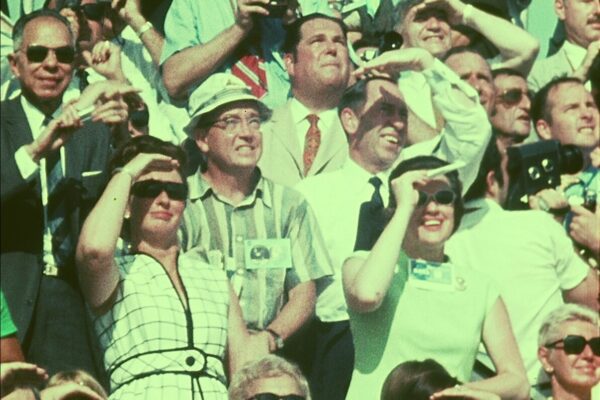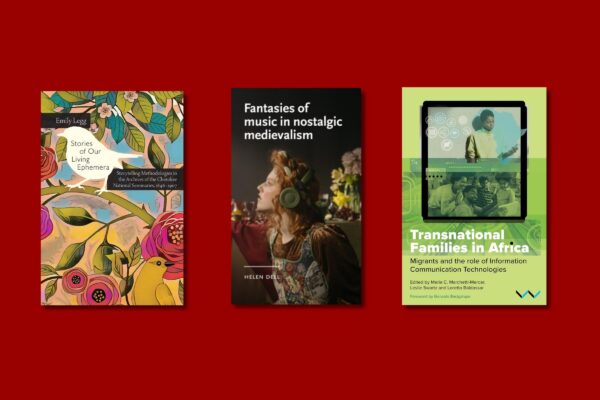Artstor on JSTOR isn’t just images. Artstor collections encompass multimedia content, including audio, video, and panorama formats. The sound, motion, and visual depth of these formats makes possible a more immersive and engaging research experience, while simultaneously boosting accessibility and supporting diverse learning styles.
Learn about our ever-expanding collection of multimedia content.
Beyond images: Multimedia enhances research and accessibility
JSTOR continuously improves its offerings to benefit our users. We integrated multimedia into the Artstor collection on JSTOR so you can experience:
- Enhanced research: Multimedia content supports primary source research, interdisciplinary studies, and the general expansion of materials considered to be research. Dynamic content also lends itself to new discoveries via intersections and fusions of fields and ideas.
- Accessibility: Multimedia content can cater to diverse learning styles and abilities, allowing people to consume information in the format that works best for them. Visual learners, auditory learners, and those who benefit from interactive content will benefit from an enhanced research experience. Content is easily accessible through transcripts of audio and video records. This makes the content available to a broader audience, and ensures that we’re maintaining an inclusive learning environment.
Notable new multimedia content on JSTOR
Video content
Artstor on JSTOR now features 843 videos, offering a wealth of visual content that brings subjects, events, and emotions to life. From historical footage to computer-generated contemporary art, the videos in our collections span many decades and disciplines. We’ve picked out some highlights for you, but there’s so much more to explore.
The following highlights are from the open access Wellcome Collection on Artstor on JSTOR:
This video from 1938 details the journey of international physiologists as they head to a conference in Zurich, dressed in extravagant formalwear, as was considered appropriate for air travel at the time. The group isn’t as stuffy as you might think! In fact, they’re never even shown at the conference, instead spending their time marveling at the Swiss countryside, mingling with the local Swiss who’d come to welcome them, and splashing around in the pool.

In this meditative short film, artist Sop, who shielded throughout the pandemic due to preexisting medical conditions, collaborates with dance artist Michaela Gerussi and editor Kester Davies to provide an immersive experience.1

A recent video installation from 2020 titled A Lament for Power by contemporary British Ghanaian artist Larry Achiampong and British artist David Blandy explores pop culture and post-colonialism using performance to investigate the self as a fiction, devising alter egos to point at their divided selves.2 Is it a Zombie film? You be the judge.

For more video art from Artstor on JSTOR, explore our licensed video collection from the Franklin Furnace Archive, featuring performance art, site-specific works, and other time-based media.
You can also find historical footage, such as A little goes a long way, a public service announcement from the United Kingdom’s Department of Health and Social Security in 1977 about the increasing need for blood and blood products in modern medical interventions.

These are just a few examples. To find all video content on JSTOR, search “cty:contributed_video”.
Audio content
Nearly 150 new audio files are now available on JSTOR, enriching the platform with sound recordings that span various fields of study. You’ll find historical speeches, interviews, hypnosis instruction audio, and more.
Highlights from the open access Wellcome Collection include:
Frank Rowntree compilation recordings: Audio with transcript of a serious discussion about a “recent report from the US which suggests that the dead should be launched into space.”
Francis St. D. Rowntree. Frank Rowntree Compilation Recordings. Part 4, Track 12. 1972. 1 encoded audio file (00:02:42) . Wellcome Collection.
Typical hypnotic induction: Audio with transcript of “a demonstration of the technique of hypnotic induction from the Dental and Medical Society for the Study of Hypnosis.”
Graves Medical Audiovisual Library. Typical hypnotic induction. 1960. 1 encoded audio file (00:23:16). Wellcome Collection.
To find all audio content on JSTOR, search “cty:contributed_audio”.
Panorama content
JSTOR now includes more than 2,300 panoramic images from our four licensed Artstor collections. Viewers are transported across time and space when experiencing these sweeping, three-dimensional, fully immersive views. Notable collections include:
World Architecture: Virtual Reality Panoramas from Columbia University
Thousands of high-resolution panoramic images of iconic international monuments and sites, like the Cathedral of Notre-Dame:
Jean de Chelles, Pierre de Montreuil. Panorama of Cathedral of Notre-Dame (exterior view of west facade, south portal). ca: 1163-1250.
Society of Architectural Historians Architecture Resources Archive (SAHARA)
Dozens of panoramas of architecture, landscape design, and the built environment, like the Wrigley Building:
Graham, Anderson, Probst, and White (architectural firm). Panorama of the Wrigley Building. 1921.
The Mellon International Dunhuang Archive
Explore dozens of Buddhist cave shrines in Dunhuang, China, dating back to the 2nd century BCE.
Shuilu’an Temple from Northwestern University
Panoramas from within the Shuilu’an Temple in Shaanxi Province, China show striking, highly detailed sculptures and the unique architecture.
To find all panorama content on JSTOR, search “cty:contributed_panoramas”.
For more unexpected, immersive, and entertaining content from Artstor on JSTOR, check out, “There’s much more to Artstor than art.” Deepen your insights by immersing yourself in our diverse media today.
Related content
Did you know Artstor features more than just images?
References
1Gerussi Sop. The Den. 18 May 2021-13 June 2021, Wellcome Collection, London.
2Summarised from documentation provided by curator, compiled using the artists’ websites: https://davidblandy.co.uk/ https://www.larryachiampong.co.uk/.



